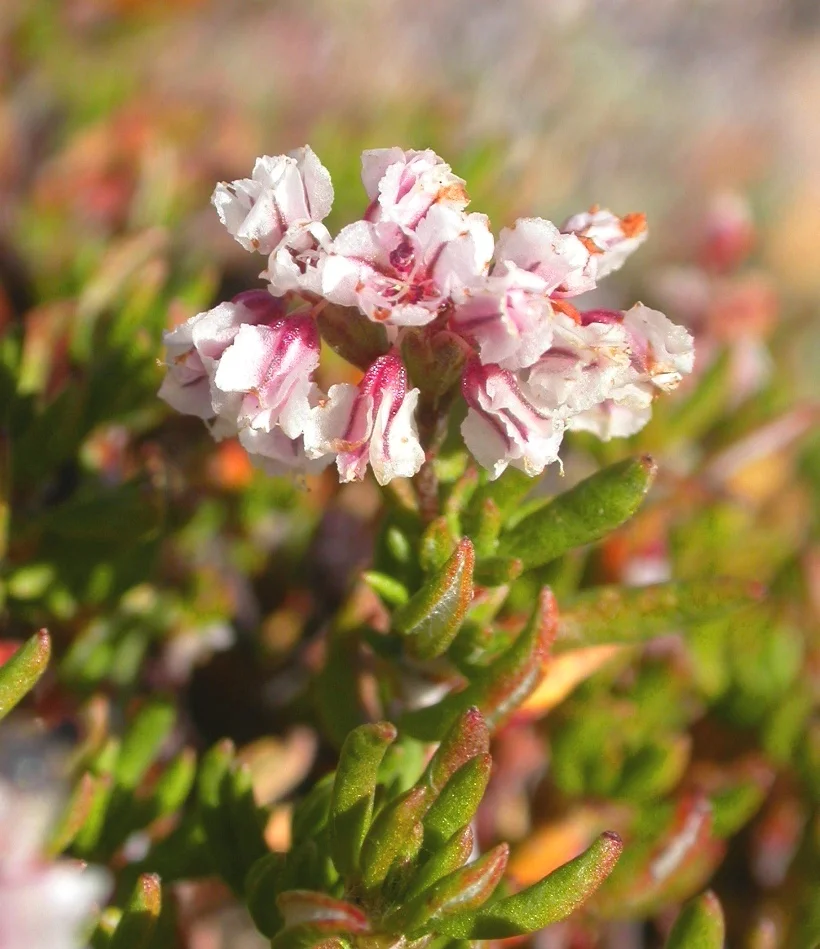High up in the mountains that adorn the Mojave National Preserve lives a plant that you cannot find anywhere else in the world. The plant clings to survival along ridges and slopes at nearly 5,500 feet elevation in a small corner of the New York Mountains. The kind of place a hiker would seek out for stunning views of the desert below.
A Thorne's buckwheat is the kind of ground-hugging plant many humans would probably clumsily step on. Photo by James Andre.
The Thorne's buckwheat may only stand about an inch tall, but its continued existence is proof that it is anything but a diminutive character in the story of life. Preserve botanist Drew Kaiser, who is spearheading studies of the plant, says "the thing I find most remarkable is that this small population has withstood some fairly catastrophic events and keeps on trucking."
History has indeed thrown plenty of circumstances at this plant that could have rendered it extinct. The Thorne's buckwheat prefers gravel rich in copper, which means the species found itself at the center of decades of prospecting and mining activity before its range was protected as part of the Mojave National Preserve. Pack animals and internal-combustion engine vehicles ferrying people, supplies and equipment have degraded the plant's habitat. The roads that those miners cut through the mountains now bring hunters, campers and hikers into the plant's limited range. One of the roads cuts straight through the primary concentration of remaining plants.
Firefighters tackle the Hackberry Fire of 2005.
Thorne's buckwheat faced a significant threat to its existence in 2005 when nearly a third of the living plants were killed as lightning-sparked, wind-driven flames whipped across the Mid-Hills area of the Preserve. The fire was finally stopped after it burned over 100 square miles; it could have easily spread to the rest of the Thorne's buckwheat range.
The white and pink bloom of the Thorne's buckwheat can be seen in July and August. Photo by James Andre.
Like a typical desert hermit, we still don't know much about Thorne's buckwheat. We don't know how it ended up isolated with such a small population in the New York Mountains, although desert mountains are known to host relic populations of plants that may have been more widespread before drier times made lower elevations less hospitable. The Thorne's buckwheat is one of over 60 rare plant species found in the New York Mountains, according to Kaiser.
Kaiser hopes his research contributes answers to some critical questions about the plant's future. How successful is the plant at reproducing? Is its range changing? What organisms are pollinating these plants? Are those pollinators doing well, or are they as beleaguered as the buckwheat?
The Thorne's buckwheat doesn't receive the attention that other Mojave organisms do. It's not as iconic as the Joshua tree or as loved/hated as the cholla cactus. But it is a remarkable representative of the desert's biodiversity. So next time you are wandering about the Preserve, please tread lightly.

